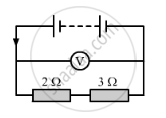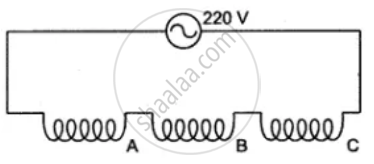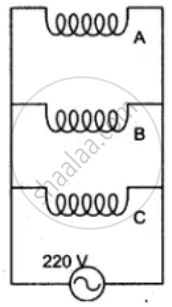Advertisements
Advertisements
Question
Solution
We know that,
P=VI
I = `"P"/"V" = (2.4 xx 1000)/12` = 200 A
The current supplied by the battery is 200A
APPEARS IN
RELATED QUESTIONS
The work done in moving a unit charge across two points in an electric circuit is a measure of:
(a) current
(b) potential difference
(c) resistance
(d) power
In the circuit shown below, the voltmeter reads 10 V.

(a) What is the combined resistance?
(b) What current flows?
(c) What is the p.d. across 2 Ω resistor?
(d) What is the p.d. across 3 Ω resistor?
The diagram shows two ways of connecting three lamps P, Q and R to A.C. supply of 220 V.


What is the purpose of fuse in an electrical circuit?
A battery of e.m.f. 15 V and internal resistance 2 Ω is connected to two resistors of resistances 4 ohm and 6 ohm joined (a) in series. Find in each case the electrical energy spent per minute in 6 Ω resistor.
State the condition when it is advantageous to connect cells in series.
- What is meant by electric current?
- Name and define its unit.
- Which instrument is used to measure the electric current? How should it be connected in a circuit?
A current of 1 A is drawn by a filament of an electric bulb. Number of electrons passing through a cross section of the filament in 16 seconds would be roughly
1020 electrons, each having a charge of 1.6 x 10-19 C, flows in a circuit V is 0.1s. What is the current in ampere?
